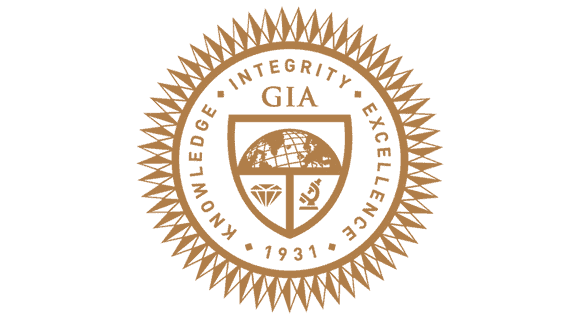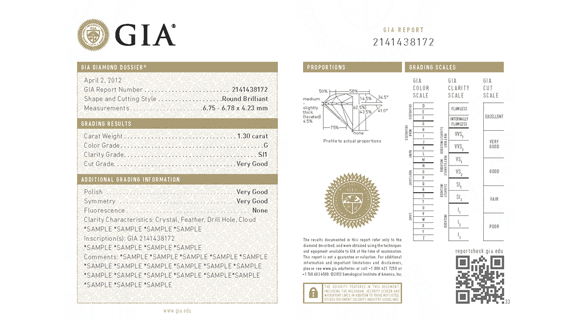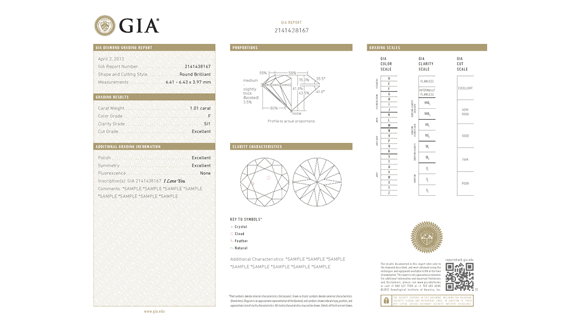GIA Certificate
GIA Certificate
Our review on GIA diamond certification
GIA's mission is to raise the customers' trust in diamonds utilizing the best expectations of professionalism, science, and integrity. They want to accomplish this by providing training, doing research, and developing sophisticated lab equipment that may be used to check diamonds. A gia diamond certificate is well respected in the industry.


Brief History of GIA
Started in 1931, the Gemological Institute of America is an independent, non-profit corporation generally considered as the planets foremost expert in gemology. Launched in 1953, their gia diamond and stone grading process is considered as an acknowledged standard worldwide.
GIA Suspends Diamond Sealing Services
As of January 2020 GIA has suspended its diamond sealing services. https://www.gia.edu/gia-news-press/diamond-sealing-services-suspended
GIA No longer offers paper certificates
As of January 2023 all GIA certificates become fully digital , more information can be found on the gia website.
GIA Grading Standards
At least four graders that were trained examine the diamonds that are graded. At each step of the stone's examination, a more experienced employee individually examines the stone. To ensure impartial assessments, the submission of stones to graders is a completely arbitrary procedure.
- Carat
After a stone's carat weight is inspected, its measurements, depth, table, angles, culet, and girdle thickness are noted. - Color
A stone's color is rated on a scale ranging from D (colorless) to Z (light yellow) by comparing it to diamonds of predetermined color. - Clarity
Clarity is evaluated on range from FL (flawless) to I3 (included) based on an examination of the stone under a binocular microscope of 10x magnification. The stone's features are plotted on a diamond diagram. - Cut Grade
Cut rating is established for brilliant round-cut stones based on the examination of the craftsmanship used when creating the stone and the interaction of the stone with light. The degree of a stone's craftsmanship is determined by considering its polish, symmetry, and proportions. The stone's light interaction is based on its brightness, scintillation, and fire. GIA determines the quality of a cut on a grading scale ranging from Excellent to Poor. - Polish & Symmetry
A diamond is evaluated for polish and symmetry on a grading scale ranging from Excellent to Poor. The grade is based on an inspection of the diamond's craftsmanship. - Fluorescence
A stone's fluorescence is decided as None, Faint, Medium, or Strong based on its reaction to uv light. - Laser Inscription
For extra security and identification, a diamond's girdle can be laser inscribed with its report number. GIA offers laser inscription services for all of the loose stone's they rate.


GIA Grading
The GIA Grading Report is released for diamonds that fall in the D-Z color range. This report includes a full qualitative analysis of shape and cutting style, measurements, carat weight, color grade, clarity grade, cut grade (for brilliant round-cut diamonds), polish and symmetry assessments, and fluorescence. The report also includes a plotted diagram indicating the relative size and location of clarity characteristics, a proportion diagram, and grading scales.
GIA Dossier Report
The GIA Dossier® is issued for diamonds between 0.15 and 1.99 carats that fall in the D-Z color range. This report includes all of the information featured in the Diamond Grading Report without the plotted diagram. All diamonds accompanied by a Diamond Dossier are laser inscribed and registered in the GIA inscription registry.











